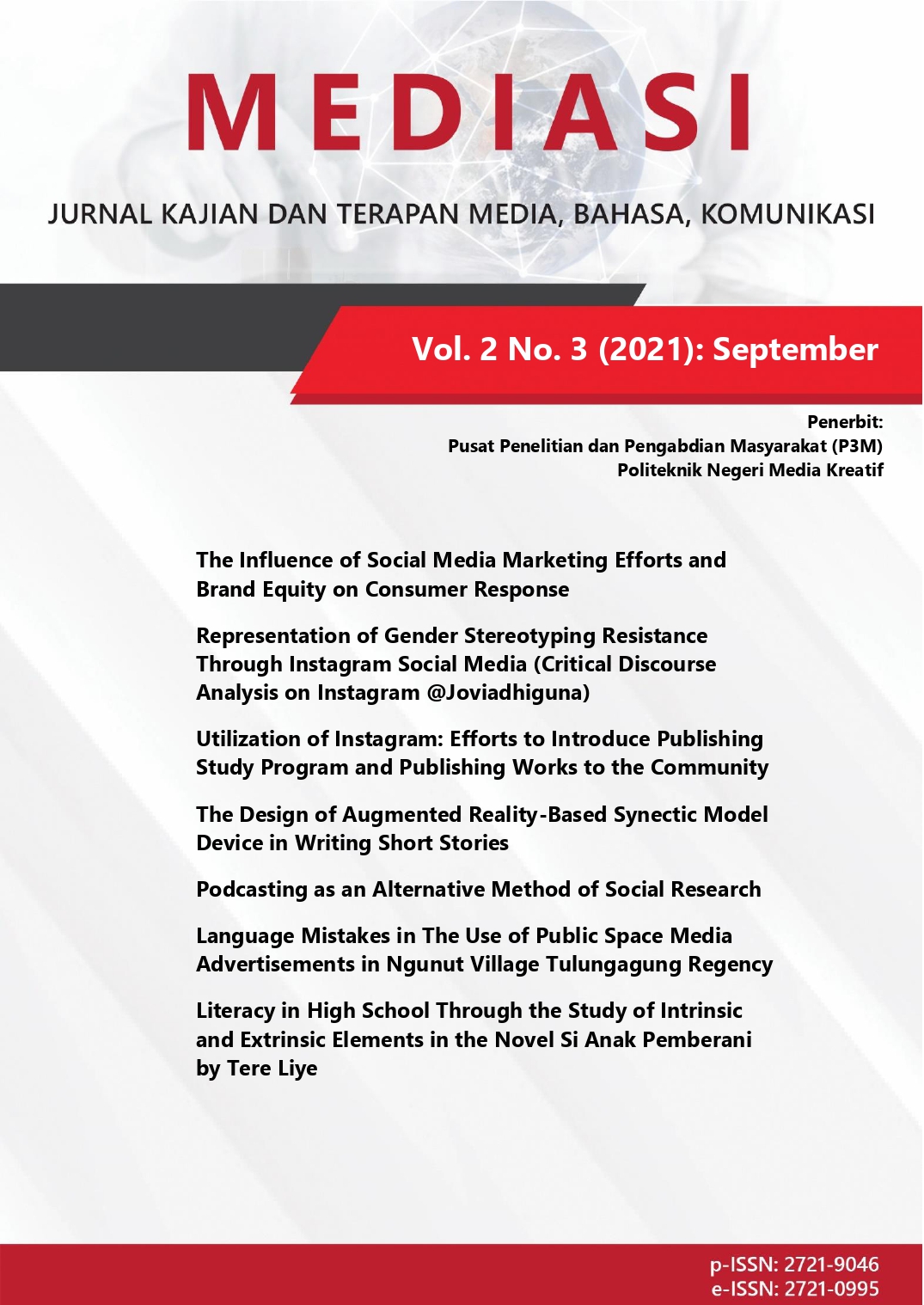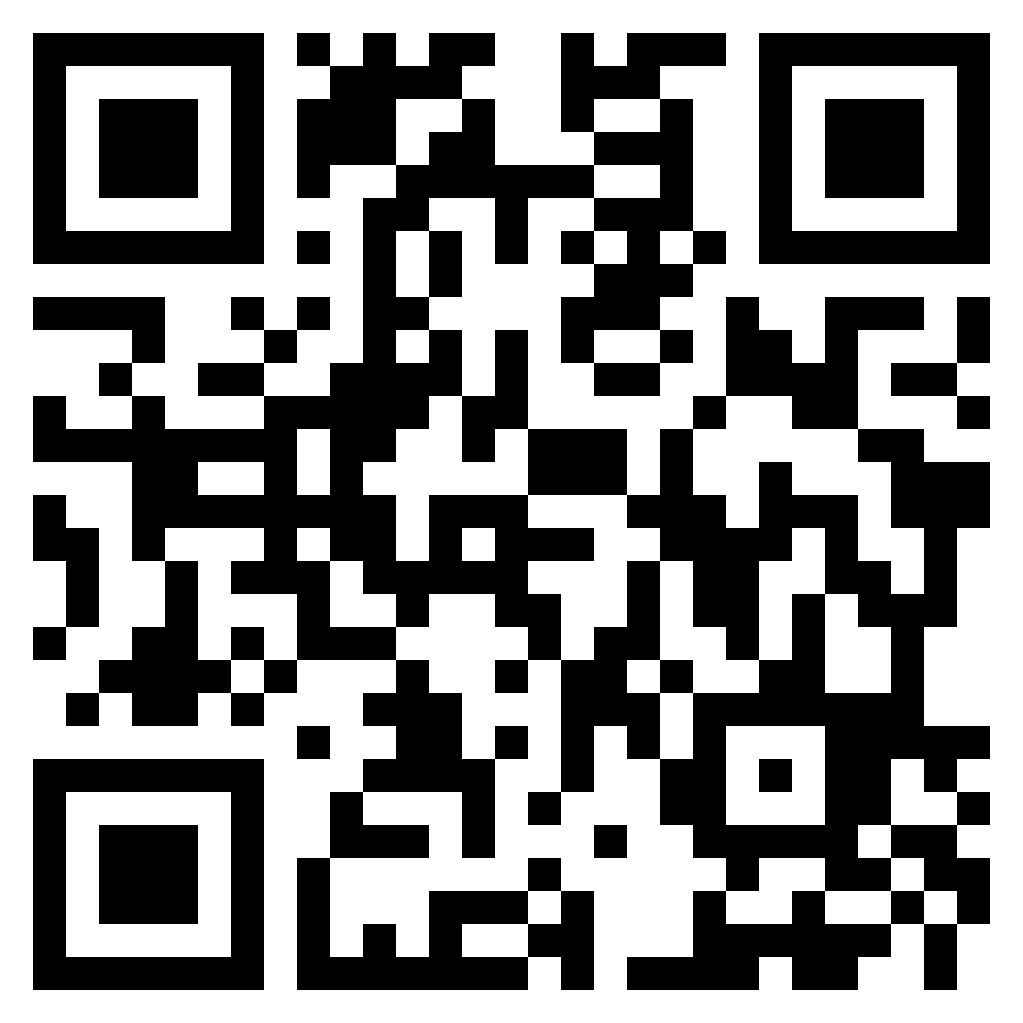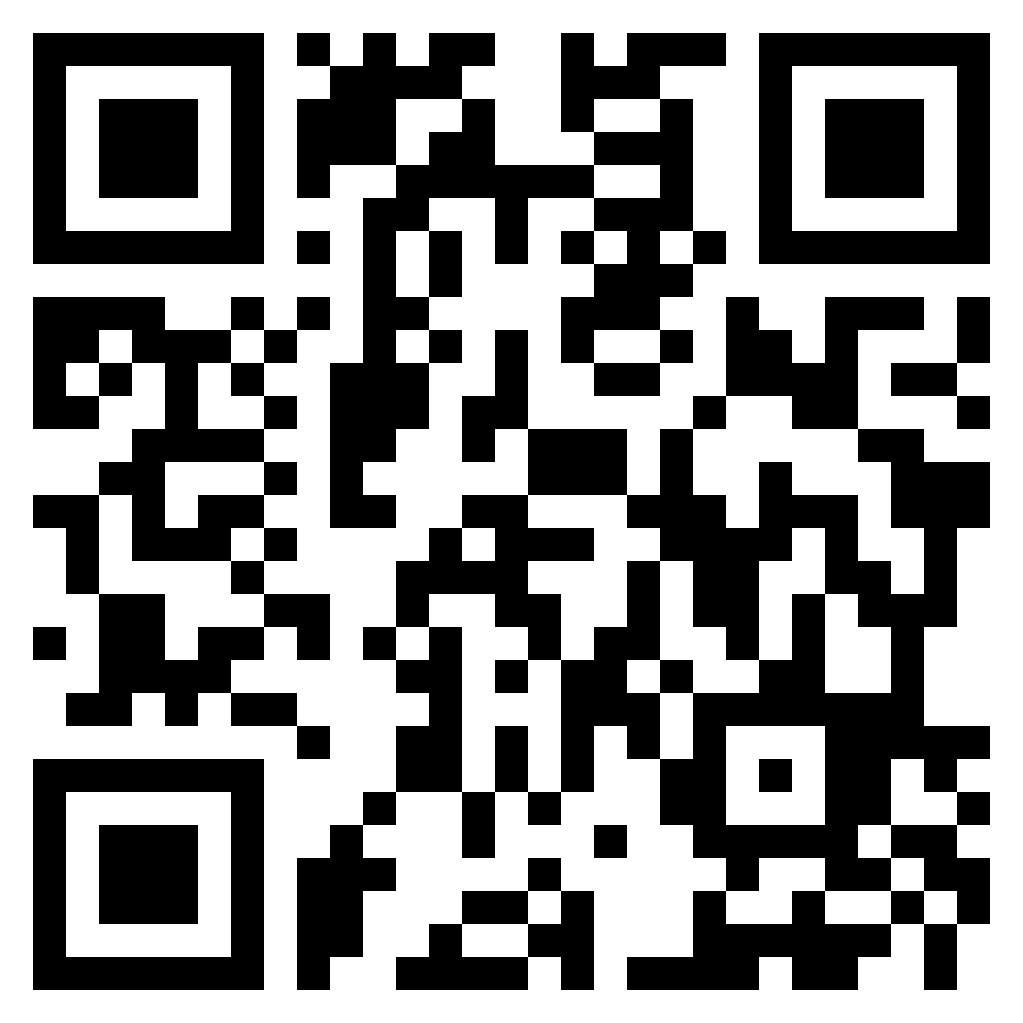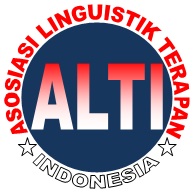The Design of Augmented Reality-Based Synectic Model Device in Writing Short Stories
DOI:
https://doi.org/10.46961/mediasi.v2i3.407Keywords:
Synectic, Short Stories, Augmented Reality,Abstract
References
Cahyani, I. (2015). Penerapan Model Pembelajaran Aktif dalam Menulis sebagai Upaya
Meningkatkan Kemampuan Menulis Mahasiswa. Prosiding Seminar Nasional
APBI dan UNINUS, 104—114.
Baer, J. (1993). Divergent Thinking and Creativity: A Task-Specific Approach. Hillsdale,
NJ: Lawrence Erlbaum Associates, Inc.
Dagher, J. P. (1976). Writing A Practical Guide. Boston: Houghton Mifflin Company.
Glynn, S.M. (1994). Teaching Science with Analogies. Athens, GA: National Reading
Research Center, University of Georgia.
Gordon, William J.J. (1961). Synectics: The Developments of Creative Capacity. New
York: Harper & Row.
Gagne, R. M., Wager, W.W., Golas, K. C. & Keller, J. M. (2005). Principles of Instructional
Design (5th edition). California: Wadsworth.
Gordon, J.J. William. (1980). Synectics Model. New York: Longman Publishers.
Jaworski, B. (1994). Investigating Mathematics Teaching: A Constructivist Enquiry.
Studies in Mathematics Education Series: 5. Bristol: Falmer Press, Taylor &
Francis Inc.
Joyce, B & Weil. (2009). Model-model Pengajaran Edisi 8. Terjemahan A. Fuwaid & A.
Mirza. Yogyakarta: Pustaka Pelajar.
Marzano, R.J., Pickering, D.J. & Pollock, E.J. (2001). Classroom Instruction that Works:
Research-Based Strategies for Increasing Student Achievement. Alexandria,
Virginia: Association for Supervision and Curiculum Development.
Miligram, P., Kishino, F., (1994). A Taxonomy of Mixed Reality Visual Displays, In
Transactions on Information and Systems, IEICE (Institut of Electronics,
Information and Communication Engineers).
National Commission on Writing. (2004). Writing: A Ticket to Work. New York: College
Board.
Ertner, P.A. & Newby, T.J. (1996). The Expert Learner: Strategic, Self-regulated, and
Reflective. Instructional Science, 24 1-24.
Nolan, V. (2003). Whatever Happened to Synectics? Creativity and Innovation
Management, 12 (1), 24—27.
Norabeerah, S. Halimah Badioze Zaman, & Azlina Ahmad. (2011). Technical Skills in
Developing Augmented Reality Application: Teachers’ Readiness. Conference:
Visual Informatics: Sustaining Research and Innovations - Second International
Visual Informatics Conference, IVIC 2011, Selangor, Malaysia, November 9—11,
, Proceedings, Part II. Tersedia daring:
https://www.researchgate.net/publication/221365179_Technical_Skills_in_Dev
eloping_Augmented_Reality_Application_Teachers'_Readiness. Diakses pada
Januari 2020 pukul 15.45 WIB.
Prawat, R.S., & Floden, R.E. (1994). Philosophical Perspectives on Contructivist Views
of Learning. Educational Psychologist, 29 (1), 37—48.
Prince, G.M. (1968). The Operational Mechanism of Synectics. Journal of Creative
Behavior, 2(1), 1—13.
Reeves, J. (2002). Writing Alone, Writing Together: A Guide for Writers and Writing
Groups. Novato, CA: New World Library.
Sanders, D.A. (1984). Teaching Creativity through Metaphor: an Integrated Brain
Approach. New York: Longman.
Sayuti, S.A., Pratiwi, W.W, Nurhadi, Kusmarwanti. (2006). Pengembangan Model
Pembinaan Menulis Karya Sastra bagi Anak dan Remaja. Tersedia daring:
http://staffnew.uny.ac.id/upload/132236129/penelitian/PENGEMBANGAN+M
ODEL+PEMBINAAN+MENULIS+KARYA+SASTRA+BAGI+ANAK+DAN+REMAJ
A.pdf. Diakses pada 16 Januari 2020 pukul 15.45 WIB.
Schild, K., Herstatt, C., & Luthje, C. (2004). How to Use Analogies for Breakthrough
Innovations. Working Papers/Technologies and Innovations Management,
Technische Universitat Hamburg-Harburg, 24,1—11.
Siddiqui, Mujibul Hasan. (2013). Synetics Model of Teaching: Developing Creativity
Skills of Individuals and Groups of Society. INDIAN JOURNAL OF APPLIED
RESEARCH, 3(4), 132—134.
Stanton R., et all. (2012). Teori Fiksi. Yogyakarta: Pustaka Pelajar
Weisberg, R. W. (1999). Creativity and Knowledge: A Challenge to Theories. In R. J.
Sternberg (Ed.), Handbook of Creativity (pp. 226-248). New York: Cambridge
University Press.
Widiarti. (2013). Keefektifan Model Sinektik dalam Pembelajaran Keterampilan Menulis
Cerpen Siswa Kelas X SMA Negeri 2 Purworejo. S-1 Skripsi. Universitas Negeri Yogyakarta.
Downloads
Published
How to Cite
Issue
Section
Citation Check
License
You are free to:
- Share — copy and redistribute the material in any medium or format
- Adapt — remix, transform, and build upon the material
- The licensor cannot revoke these freedoms as long as you follow the license terms.
Under the following terms: Attribution; NonCommercial; and no additional restrictions.















